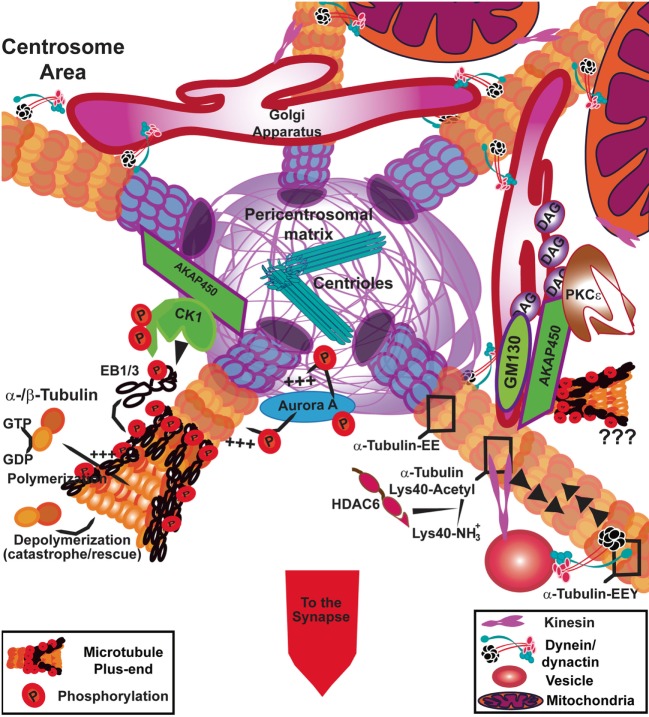Figure 3.
Signaling at the centrosome area to fuel tubulin polymerization. In T cells, the polymerization of microtubules (MTs) from the centrosome is controlled by casein kinase Iδ (CKIδ) through phosphorylation of end-binding 1 (EB1). AKAP450 anchors CKI to the pericentrosomal matrix. Aurora A also promotes the incorporation of α/β-tubulin heterodimers into MTs at the centrosome through its kinase activity. AKAP450 can also dock at the Golgi apparatus where it may collaborate with GM130 to facilitate tubulin polymerization. The Golgi apparatus is formed by diacylglycerol (DAG)-enriched membranes, where protein kinase C (PKC)ε anchors. AKAP450 binds to hypophosphorylated PKCε, which can constitute a reservoir for the non-activated kinase. The post-translational modifications of the MTs can affect the binding of molecular motors; kinesin likely interacts preferentially with acetylated MTs and dynein/dynactin interact with tyrosinated MT (α-tubulin-EEY) through dynactin binding, although dynein can move along detyrosinated (α-tubulin-EE) and tyrosinated MTs. Both motors are in charge of movement around the centrosomal area, of organelles such as vesicles and mitochondria, whereas dynein is the main responsible for Golgi apparatus shape and stability. The images in the figure are not scaled.

